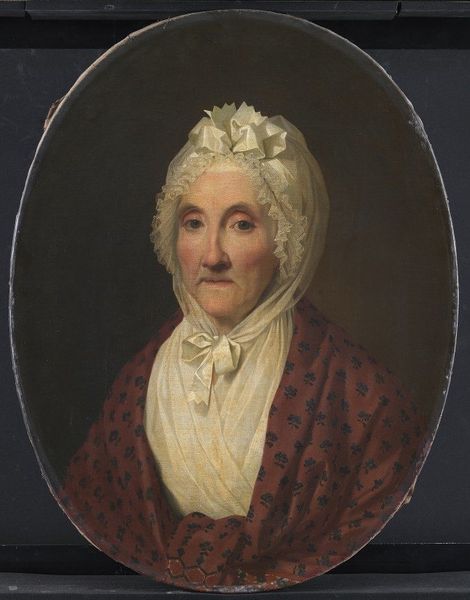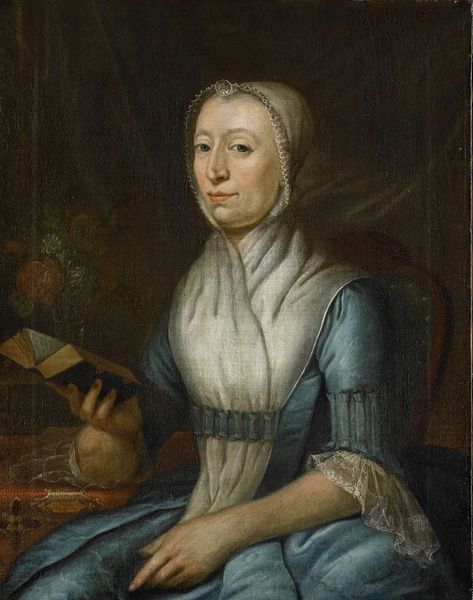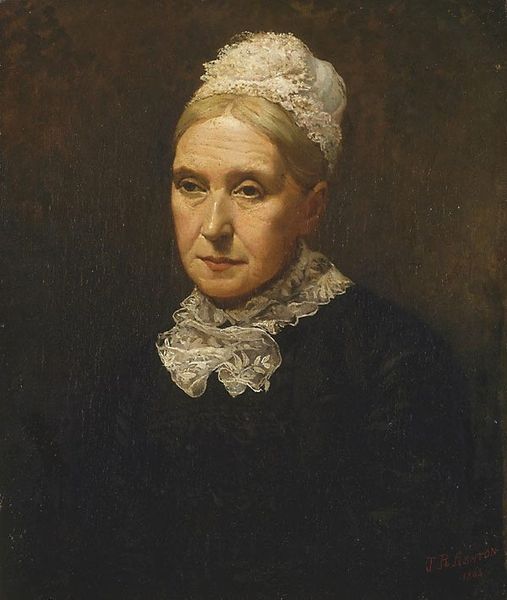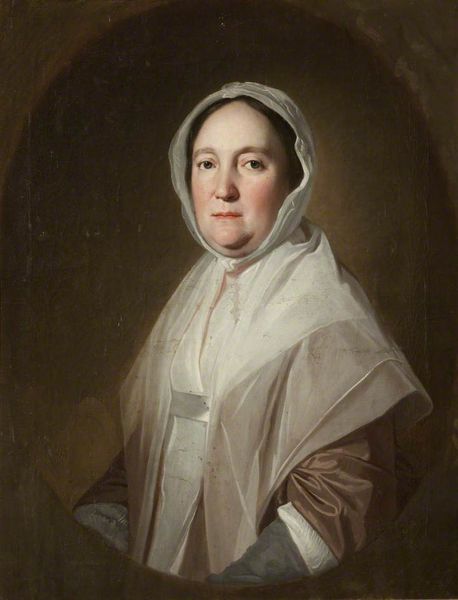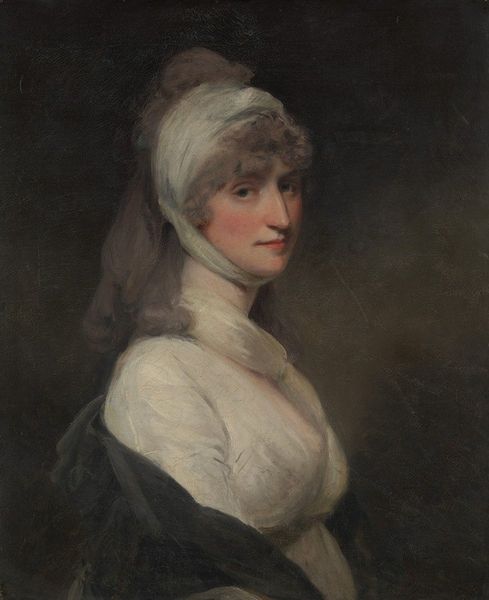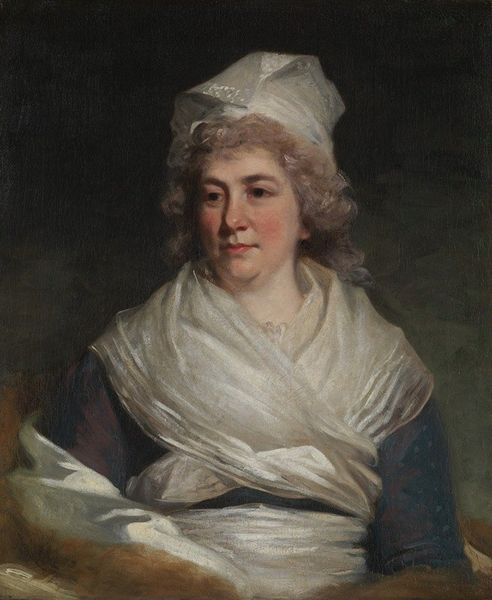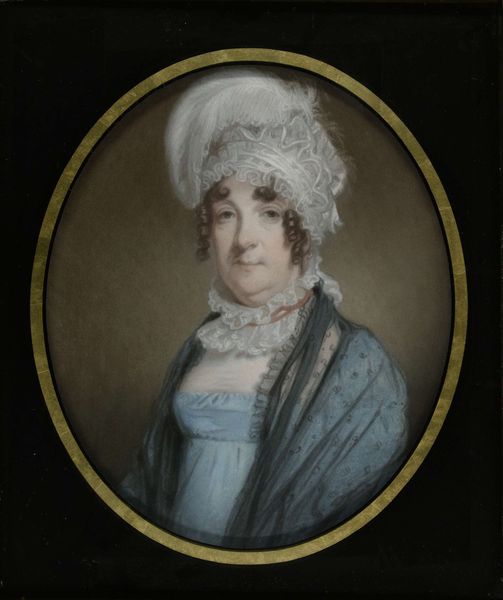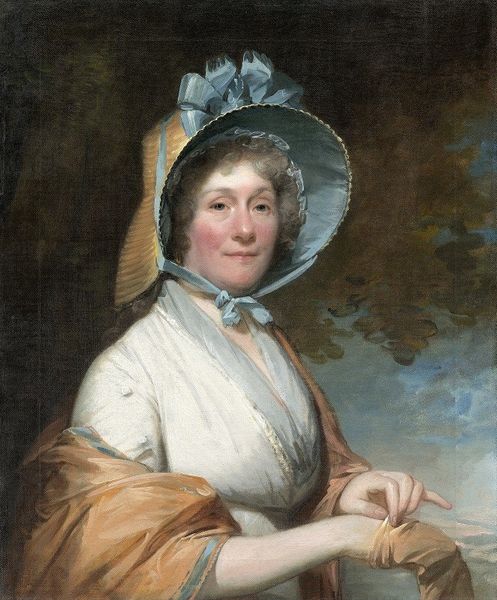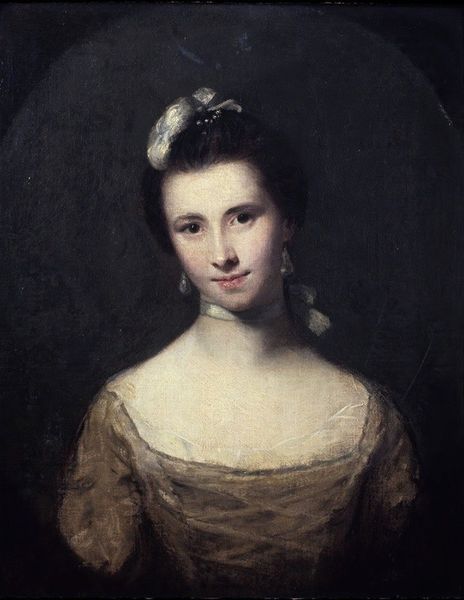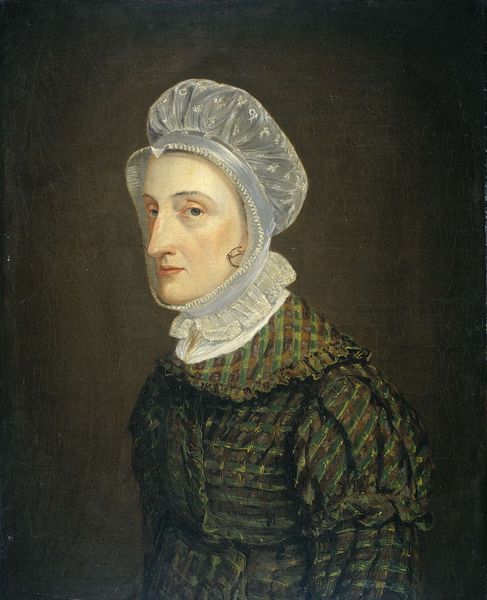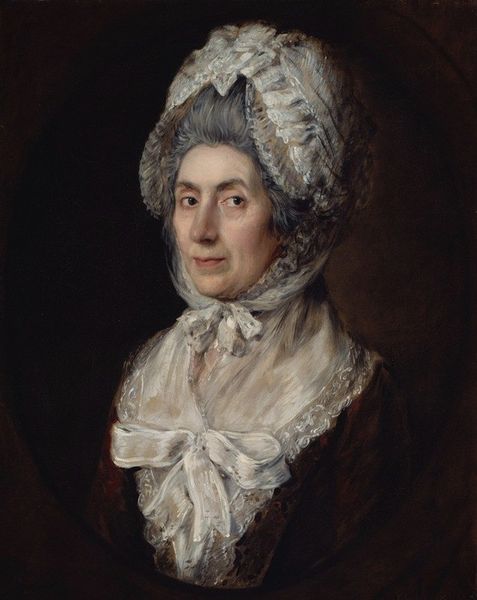
painting, oil-paint
#
portrait
#
painting
#
oil-paint
#
romanticism
#
academic-art
#
realism
Dimensions: height 79.1 cm, width 62.2 cm, thickness 3.0 cm, depth 5.8 cm
Copyright: Rijks Museum: Open Domain
Curator: This is a portrait of Christina Sebilla Charlotte Bakhuizen, painted in 1802 by Benjamin Wolff. It's rendered in oil paint, a very popular medium for portraiture at the time. What’s your initial reaction? Editor: Quiet. Almost a whispered quality to the greens and the lighting. The texture gives her a presence. Curator: The subdued palette certainly sets a tone. Consider the conventions of portraiture at the time; they’re moving from Baroque dynamism into Romantic introspection, tinged by Realism in its detail. What do you make of the woman's attire? Editor: Simple, almost severe. The plain cap and shawl – they signal modesty, certainly, but there's something also very deliberate about it. Like she's choosing to present herself this way, stripping away artifice. There's something subtly defiant, I think, in its understatement. Curator: It speaks volumes about her place and role in society, conforming, yet projecting something individual, almost transcending what was considered fashionable at the time. The lack of jewelry, the simplicity of the headwear. Editor: It makes you wonder about the power dynamics at play here, right? A woman's portrait wasn't just a likeness; it was a statement, often about status and wealth. She's deliberately eschewing those markers, forcing you to look at *her*, not her possessions. Her calm face suggests perhaps inner conviction. Curator: It definitely evokes those deeper levels of meaning. Let’s not forget the symbolic power of portraiture in the era: declarations of lineage, character, aspiration. What we have here is a play on it all; a simplification that gives an insight into Romantic values—inner strength, individual dignity above adornment. Editor: That’s the lasting impact of these quiet portraits, isn't it? They linger in your mind, long after you've seen the grand, ostentatious displays of wealth. It leaves you feeling you know something important about Christina, even across time and circumstance. Curator: Exactly. The piece operates almost as a manifesto against the excessive materialism which defined her time. Its quiet resistance is still worth examining today. Editor: It's remarkable how a seemingly simple portrait can offer such depth. There are layers in it, almost like geologic strata, aren’t there?
Comments
No comments
Be the first to comment and join the conversation on the ultimate creative platform.

